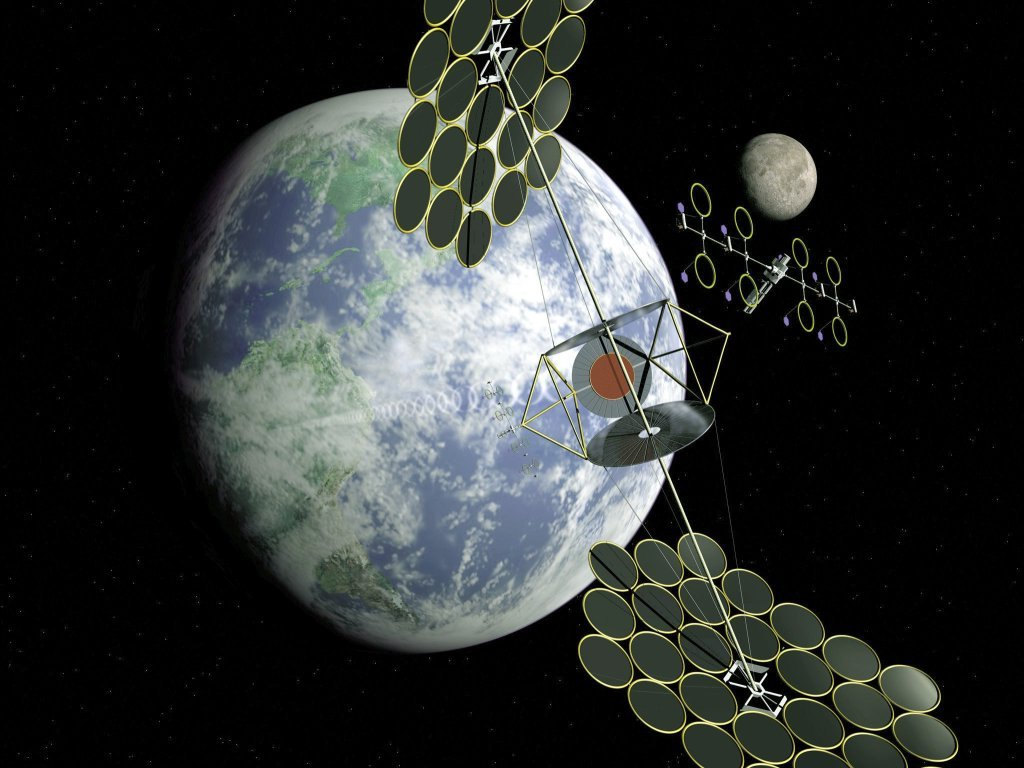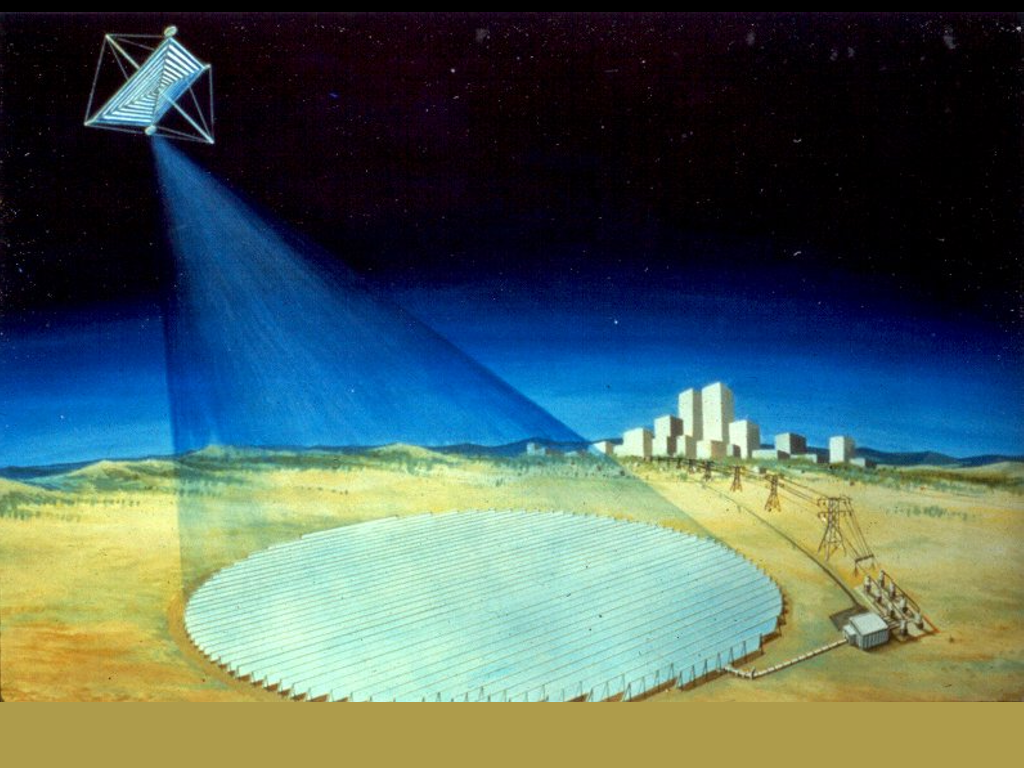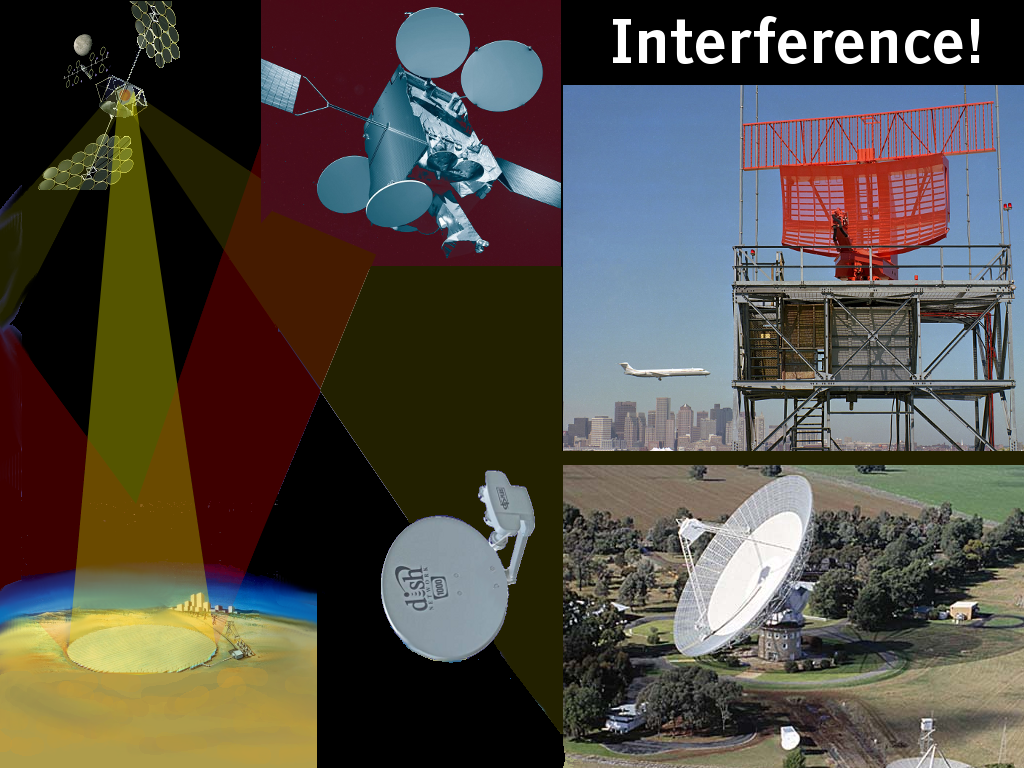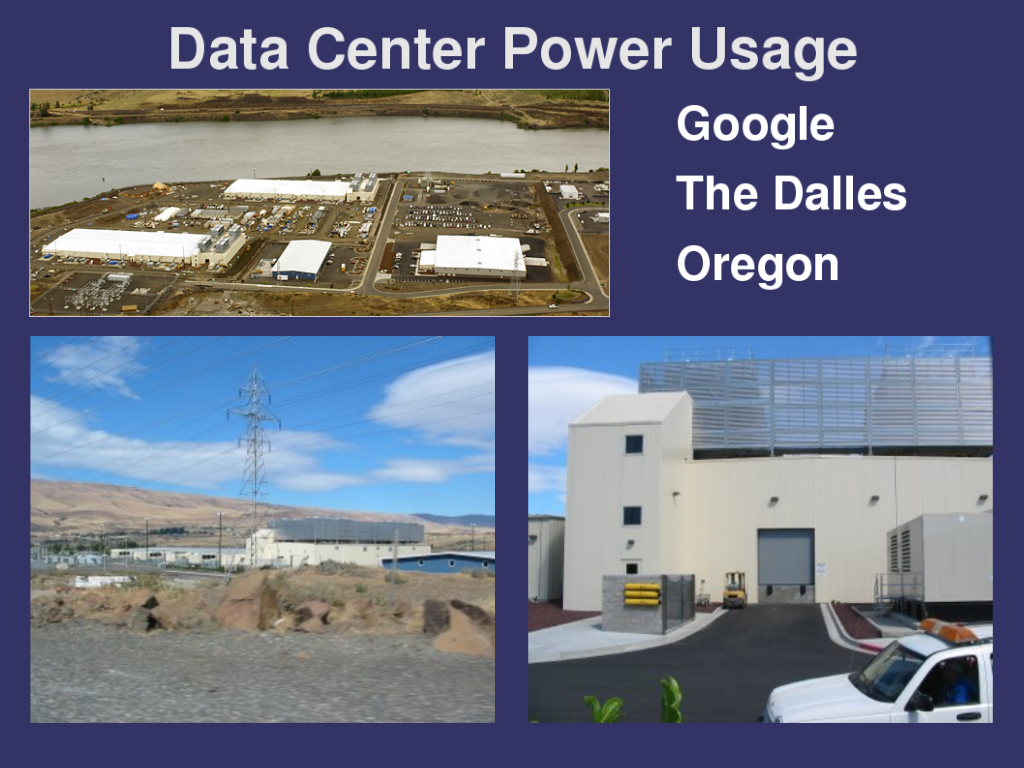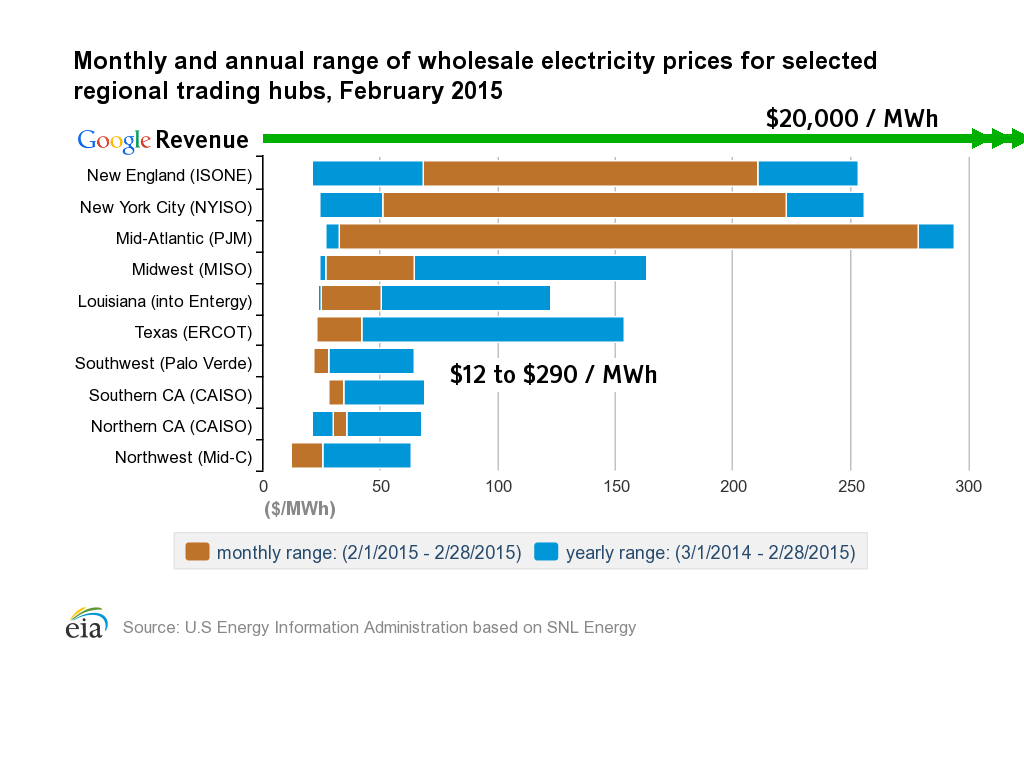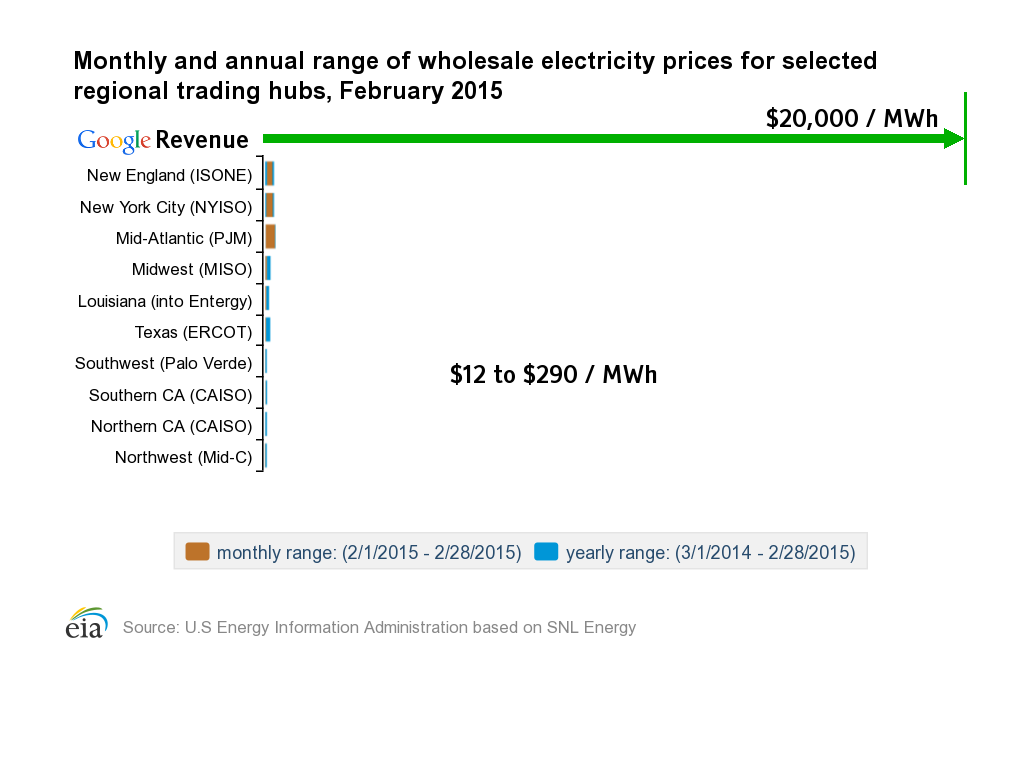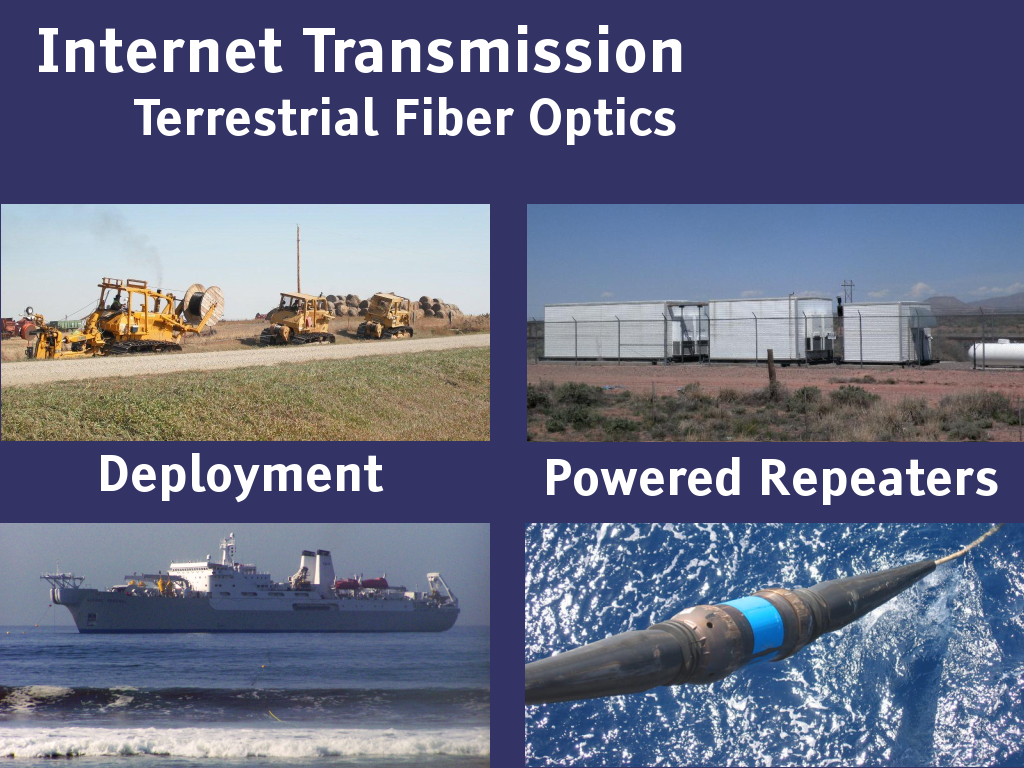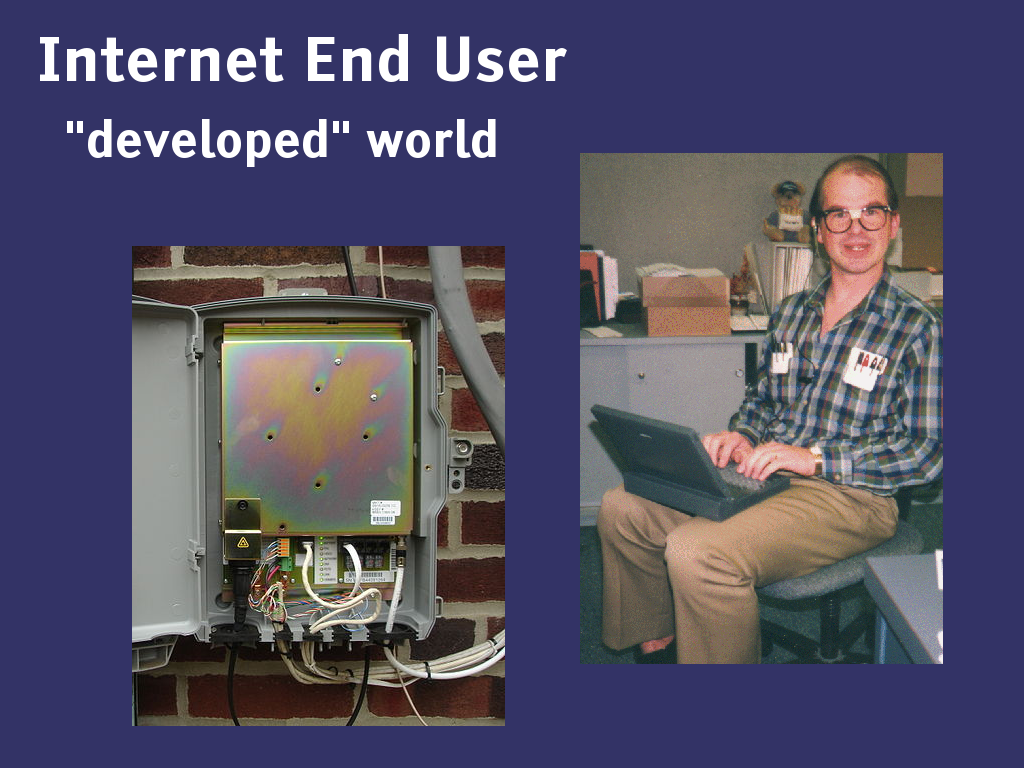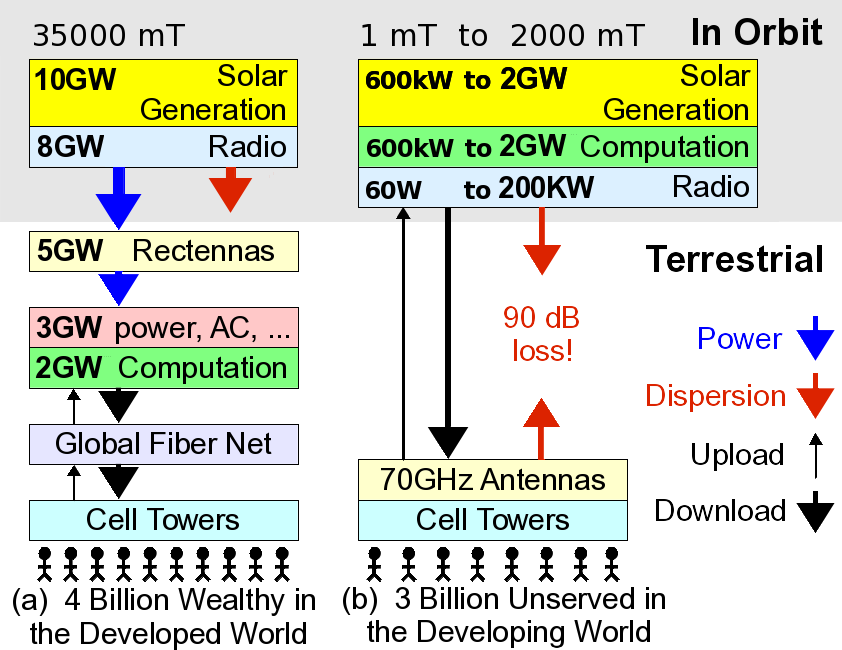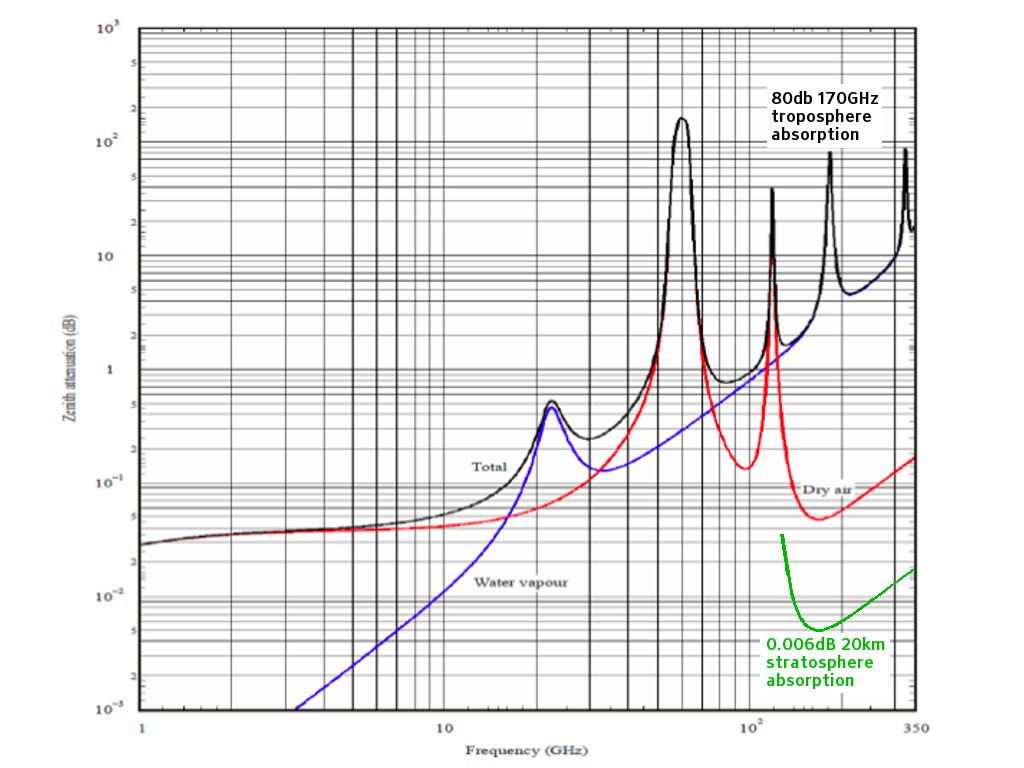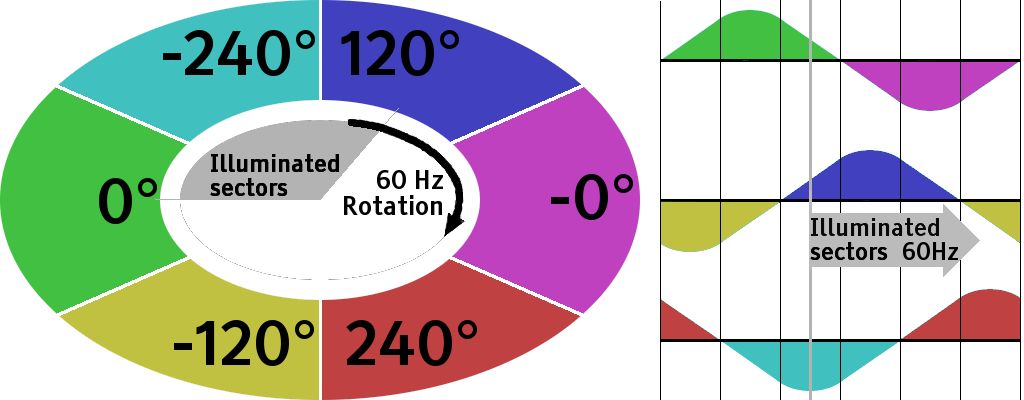Send Bits, Not Watts
In 1974, Peter Glaser published "Feasibility study of a satellite solar power station", NASA CR-2357 . He and his coauthors imagined huge structures in geosynchronous orbit capturing gigawatts of solar power and beaming it as microwaves to receivers on earth, 40 000 km away. Because of beamforming diffraction limits, both transmitting and receiving antennas must be enormous, kilometers across, comprising millions of heavy microwave components.
Fig. 1: space solar power satellite |
Fig. 2: ground rectenna, converter, power line |
|
|
|
|
Fig. 3: In 1974, GEO orbit was almost devoid of assets, and computers were big and slow and power hungry. Much has changed in four decades, but Space Based Solar Power is still wedded to the Glaser model, and still a speculation frozen in time, based on the assumption that we would grow ever bigger boosters evolving out of the Saturn V. |
|
|
|
Space power faces similar transportation difficulties, and similar solutions. Transforming space power into high value products before shipment reduces costs and increases value. Data center computation is very expensive and energy hungry. Google consumes hundreds of megawatts of electricity to produce information and advertising revenues of $33 B in 2011. Some adwords earn more than $50 per clickthrough.
|
|
|
|
Fig. 8: Let's rescale the last graph so that we can see 20,000 on it. The markup ranges from 70 to 17 hundred, enough to attract most smart pioneers. |
|
|
|
|
|
|
|
Fig. 10: But what about the rest of the world, especially the three billion without grid electricity or wired telephones and cable? We can reach them with 70 GHz microwaves - at least we can if we use space energy and spectrum for high value computation and communication, not low value grid power. |
|
Transistors were 10 microns across in 1974; now they are close to 10 nanometers, and much thinner. The active silicon CPU surface in a Google data center weighs a few kilograms - launching it into space would add very little to its cost.
Space launch does cost way too much, perhaps $10,000/kg. The energy and materials cost is closer to $100/kg; launch costs too much because launch rates are too small to pay the salaries of the standing army that builds and launches rockets. But nobody, certainly not risk-adverse and conservative electric power companies, is going to pay $10K or even $100 per kilogram to put infrastructure in space to generate $100/kg-year revenues.
If we can increase the revenue per kilogram 100 or 1000 times, while scaling down systems on the ground and in the sky, we can justify rapidly growing space infrastructure even at current launch costs. If we can launch 4GW/year of data service at 2KW/kg (perhaps half of global data center growth), producing hundreds of billions of dollars of revenue, the competition for this new 2000 tonne/year launch market, 10x the size of the current market, will pay for the kind of launch system development and cost reduction that space enthusiasts have hoped for with space based solar power, while bringing internet connectivity to the world.
Look at your smart phone - a very powerful machine, using a wisp of power and a handful of materials, channeling valuable information to you, while reducing your consumption of materials and energy. Information substitutes for energy consumption; server sky information will someday replace terawatts of direct and indirect energy consumption.
Doing SSPS the right way
When high volume launchers are paid for by high value computation and data services, we can reconsider space solar power. This will still be a low profit activity, but when launch becomes very high volume, routine, and cheap because we are far down the experience curve, then risk-adverse long-time-horizon organizations like power companies will be able to eke out a profit on radical new technologies like SSPS. This is like the intercontinental shipment of grain, after the development of cheap ocean barges; it isn't nearly as profitable as shipping beaver furs, but the market is larger.
Space power should NOT be transmitted from GEO to the surface as low frequency microwaves, interfering with through-atmosphere communications and radio astronomy, but transmitted from GEO at 183 GHz, right in the middle of the second water absorption peak, to rectenna platforms floating on hydrogen balloons 20 kilometers high, in the stratosphere, and transmitted as DC power on cables to the ground.
The platform is very much like stratosolar, which hopes to deploy photovoltaic arrays on aerostat balloon platforms. That collects sunlight averaging 435W/m2 * cos(latitude), generating an 54 W/m2 at 60° N at 25% PV efficiency. "Stratomillimeter" operates at MUCH higher power levels, 10kW/m2 24x7. A square kilometer array can collect 10 GW, limited by cooling. The air at 20 km altitude is -57C, so direct rectenna cooling is more effective, and radiative cooling can emit directly to space, away from the earth.
At 20 kilometers altitude, a one kilometer platform casts a 650 meter center shadow with a 1400 meter penumbra, like a high dark cloud, with the shadow moving like a sundial across the earth. Also like an isolated cloud, atmospheric scattering will still cast plenty of light into the center shadow.
Fig. 11: 183 GHz microwaves are completely attenuated in the moist troposphere. The stratosphere is very dry, fractions of a ppm of moisture rather than many percent, so a rectenna in the stratosphere will efficently collect a 183 GHz microwave beam from space, while less than 10 parts per billion of the sidelobe power will reach the ground. |
|
|
|
Rectenna power density will be cooling limited; rectennas may need to be larger and lower power density to dissipate waste heat by thermal radiation. The ambient air temperature is -18C, though at 0.07kg/m3, it is too diffuse to move much power by convection. Black body radiation: assuming IR-black, optically-white surfaces with an IR emissivity of 0.8, then a rectenna running at 125°C (402K) will dissipate 1185 W/m2 into deep space on the top, and 955 W/m2 towards the 270K stratosphere/earth below - 2140 W/m2 total. If the rectenna is 70% efficient, it can sent 5 kW/m2 to the ground. |
|
A 5000 GW system of 183 GHz SSPS, wasting 5% (WAG) of the power on sidelobes, will deliver 2500 watts total sidelobe power to the ground, over the entire earth (averaging 10 pW/m2). However, the rectenna will still generate lots of harmonic power, so there will be hundreds of gigawatts of 510 GHz and 850 GHz power sprayed all over space. That will not interfere with current services, but it will prevent the deployment of new satellite-to-satellite services in the near-Terahertz band.
Really Wild Stuff: If you are especially ambitious: Send down LOTS of power, and crack stratospheric CO2 into carbon and oxygen. Make carbon fiber parachutes with the carbon. If you eliminate CO2 faster than it diffuses upwards, you will make the cold stratosphere transparent and expose the warmer lower stratosphere for more effective planetary heat radiation. Maybe not manna from heaven, but building materials and reversing global warming ain't bad! ![]()
Insanity is doing the same thing over and over, and expecting a different result. Many of us have spent our lives scheming and dreaming to make space solar power happen. Perhaps it is time to take the red pill, and follow the money to our door to the future.

